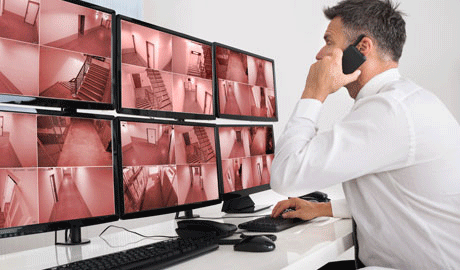The unfortunate reality in today’s world is that everyday places in our communities that were once thought of as safe – hospitals, schools, shopping malls and office buildings – are now places where people are at an increased risk for being injured by gun violence.
Increase in gun violence
Shocking incidents of active shootings have become all too common where we work, learn, relax and recuperate. In the wake of the Orlando Pulse shooting, it’s hard to forget that many tragedies have occurred, such as at schools (Sandy Hook, Virginia Tech), hospitals (Brigham and Women’s Hospital), in malls (New Jersey and Pennsylvania) and in offices (San Bernardino, California). In all types of facilities across the country, administrators and security professionals are having to step up their efforts to be better prepared and it has become critical to have a comprehensive security strategy and response plan in place that factors in active shooter events.
Role of security professionals
Active shooter research, including studies by the FBI, shows that active shooter incidents have jumped from 6.4 per year between 2000 and 2006, to 16.4 per year between 2007 and 2013. In addition, between the years of 2000-2013, 45% of active shooter incidents included commerce buildings with businesses with pedestrian traffic, businesses without pedestrian traffic, and malls. As these events have become more frequent, we have learned from the data that response time by first responders is a critical factor in saving lives. Further research shows that the average active shooter incident lasts 12 minutes and the first calls don’t come into 911 for a full 3-5 minutes. Fast action is required and having the information to know precisely where to respond and focus first responder resources is critical.
This means shortening response time should be the primary aim in dealing with the active shooter threat, second only to prevention. Security professionals must be part of both of these areas, working in partnership with relevant administrators, local government, law enforcement, first responders and the community to help prevent and better respond to gun violence. In addition, active shooter events -- large or small -- are almost always sudden and unexpected, which places a huge burden on security personnel to manage these risks without creating a prison-like environment.
 |
| Innovative technology platforms, such as acoustic gunshot detection can notify first responders and security personnel on-site about the nature and location of the incident |
Technology saves valuable response time
Innovative technology platforms, such as acoustic gunshot detection, can offer tremendous benefits in mitigating active shooting incidents occurring in a public facility or commercial environment. Recent data shows that active shooter attacks often begin outside a building and then progress indoors. Thus, the first line of defence for security professionals lies outside a facility, in a zone of protection surrounding it or comprising the entire outdoor area of a larger facility of many buildings. A combination of both indoor and outdoor gunshot detection is optimal.
An indoor/outdoor active shooter alarm system, functioning much like a fire alarm system, integrated into a comprehensive site-based—police-fire-medical response system and/or protocol, significantly increases the likelihood that active shooter threats will be identified quickly and certainly improves the chances that notification to first responders will occur far more quickly than would an event reported manually by persons on-site. As an integral component of such a system, gunshot detection technology can notify both public safety responders and security personnel on-site about the nature and location of the incident within a given facility within seconds. Internal actions can immediately be taken to ensure that designated on-site security staff can swiftly implement emergency protective measures.
Advanced gunfire detection is critical
"Most people simply do not have the practical, real-world experience with firearms discharges to make an immediate, experienced assessment of the threat" |
One of the most intractable problems in developing responses to active shooter scenarios is the inability for most people at any given facility to recognise the sound of gunfire when it first happens. Especially when surrounded by building walls which attenuate sound, most people simply do not have the practical, real-world experience with firearms discharges to make an immediate, experienced assessment of the threat. New gunshot detection technology utilises a network of both indoor and outdoor acoustic sensors to detect the precise location of gunfire in seconds, eliminating that ambiguity.
In addition to verified gunfire alerts, a monitoring center can provide additional contextualised information that is invaluable to first responders. By understanding sound and reviewing incidents frequently, acoustic gunfire experts can often share such details as number of shots fired, number of shooters or if the shooter is using an automatic weapon − critically important information for first responders rushing into a scene. Given the acuity of the sensor and the speed of the reviewer, the sounds can be identified and provided to first responders as verified gunfire in a specific location within seconds.
Smart planning and preparedness pay off
Unfortunately, there is no way to accurately pinpoint when a troubled person might attack your facility and to know what weapon they would use. Fortunately, there are tools that can help mitigate and manage these risks. Coupling available cutting-edge technology and smart, well-prepared staff can save lives and this type of preparation is already working successfully across the country in many forward-thinking schools, malls, offices and malls. We can work together so that the people of our communities can continue with their everyday routines and enjoy going to the places that make their lives better each and every day.























